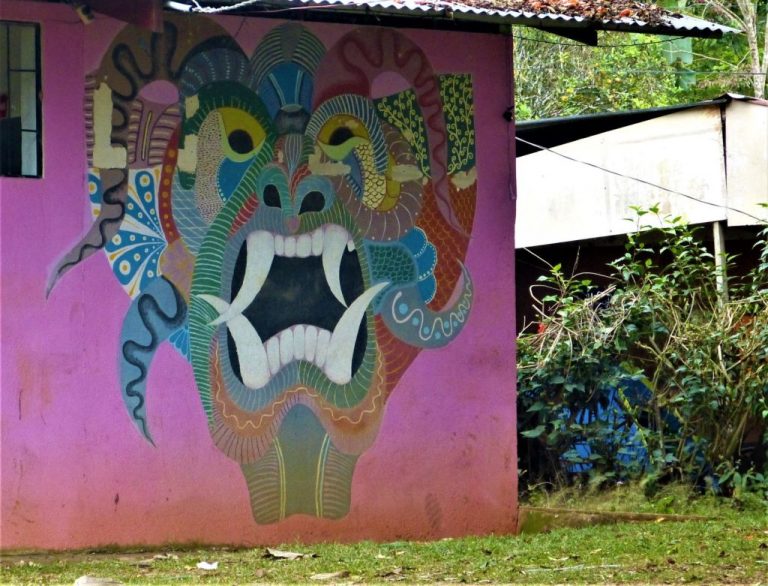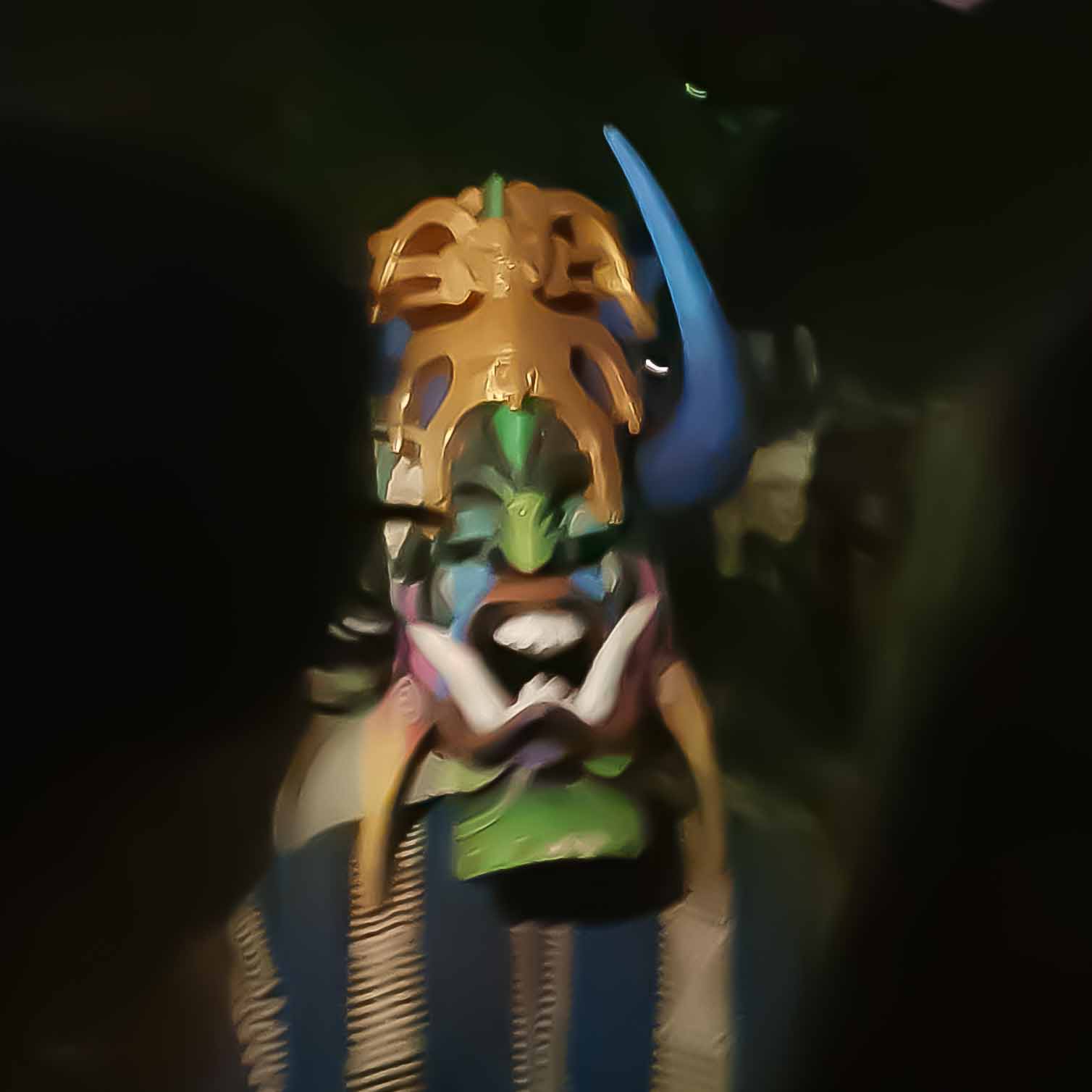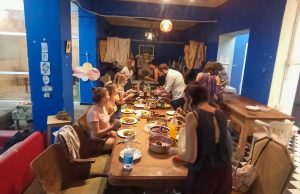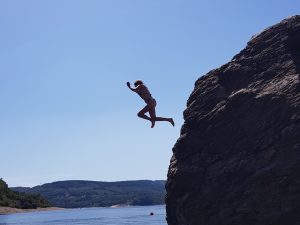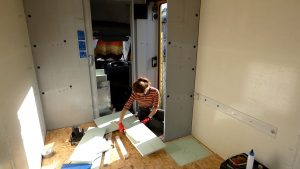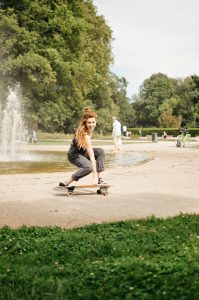In the beginning of 2020 I visited the indigenous Boruca people in Costa Rica, for one of their biggest celebrations: the ‘Baile de las diablitos’ (~Dance of the devils), where they reenact their fights against the Spanish.
Content
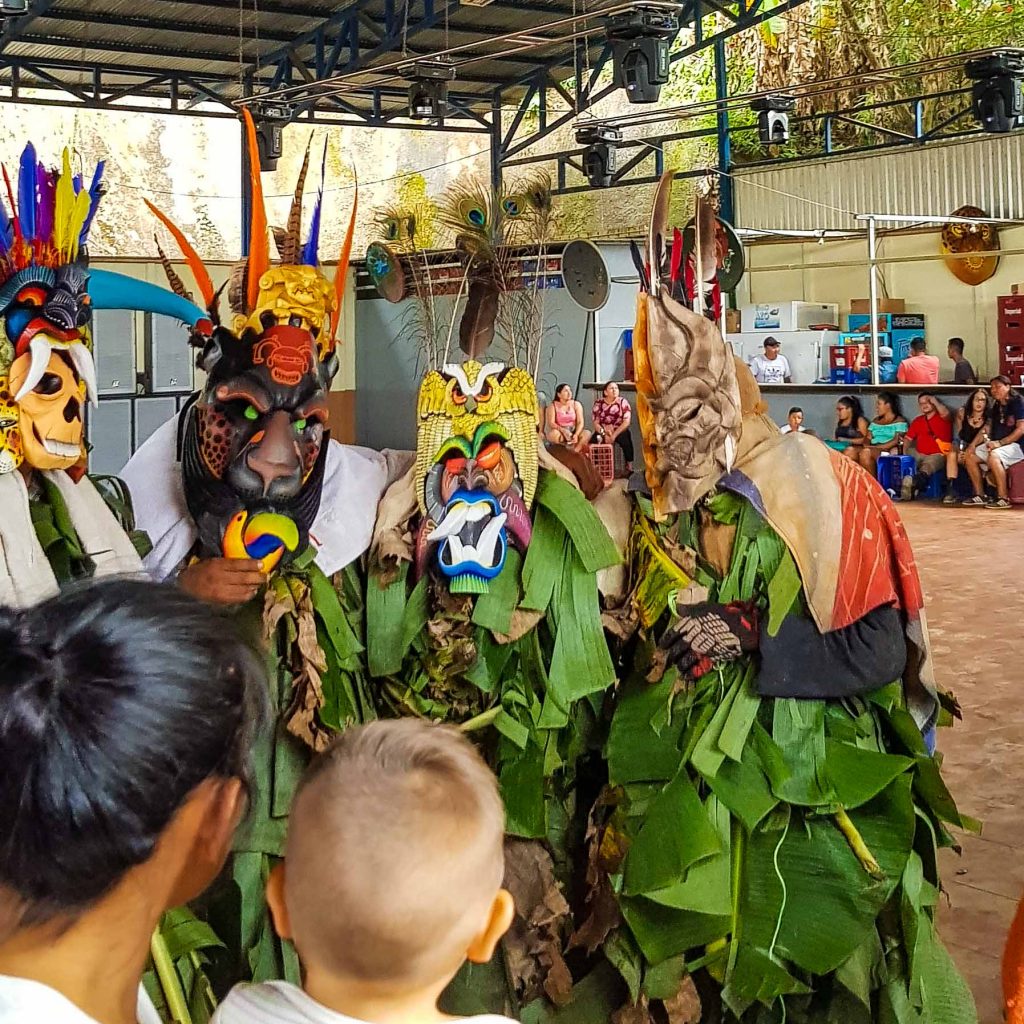
Baile de las Diablitos
Each young men carves a mask from a solid wood piece and creates a character that channels the spirit of a fallen warrior. These masks are stunning pieces of art, but also serve the purpose of protecting the face of the men during the re-inaction of their fight.
They fight a Bull, representing the Spanish, made of wood, cloth and a mask, that is carried by the fittest men out of the tribe. A group of twelve take turns to carry the bull and attack the diabilitos. Their drinking of ‘Chicha’ is (sort of) controlled to prevent serious injuries and especially during the highlight of the festival, where the burning bull is still fighting and attacking.
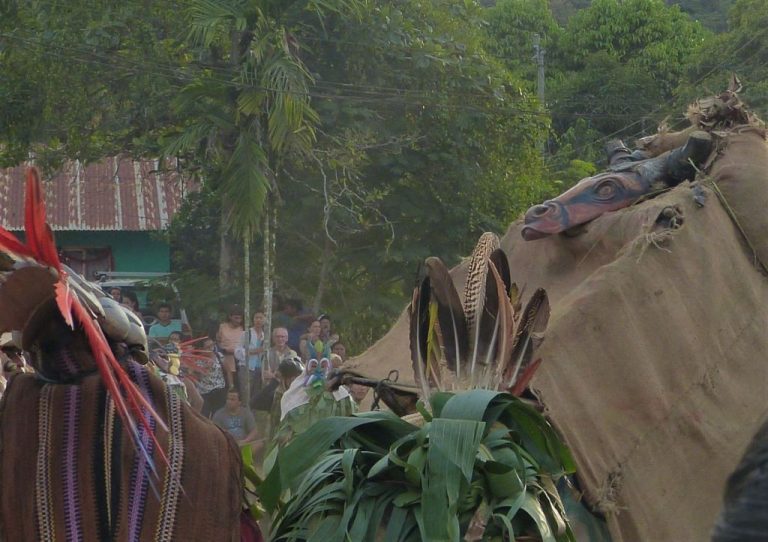
Chicha is a homebrewed Liquor, that is made from fermented mais and what ever the family recipe says. It symbolises the blood of the fallen warriors. People carry it around in giant 2L plastic bottles and share the liquor, and with it the spirit of the warriors, for free to who ever has a little carved coconut bowl to drink from.
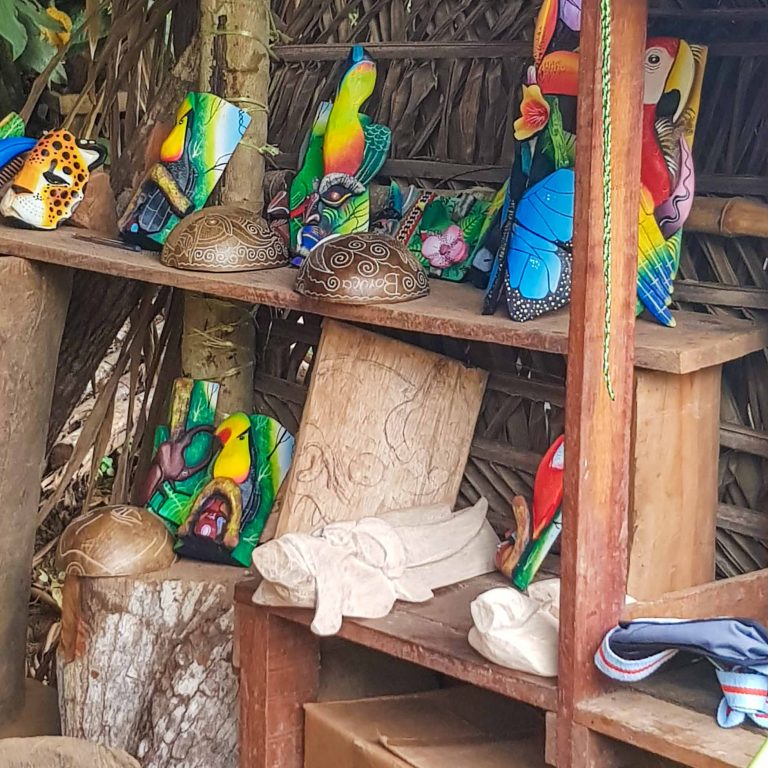
Boruca People
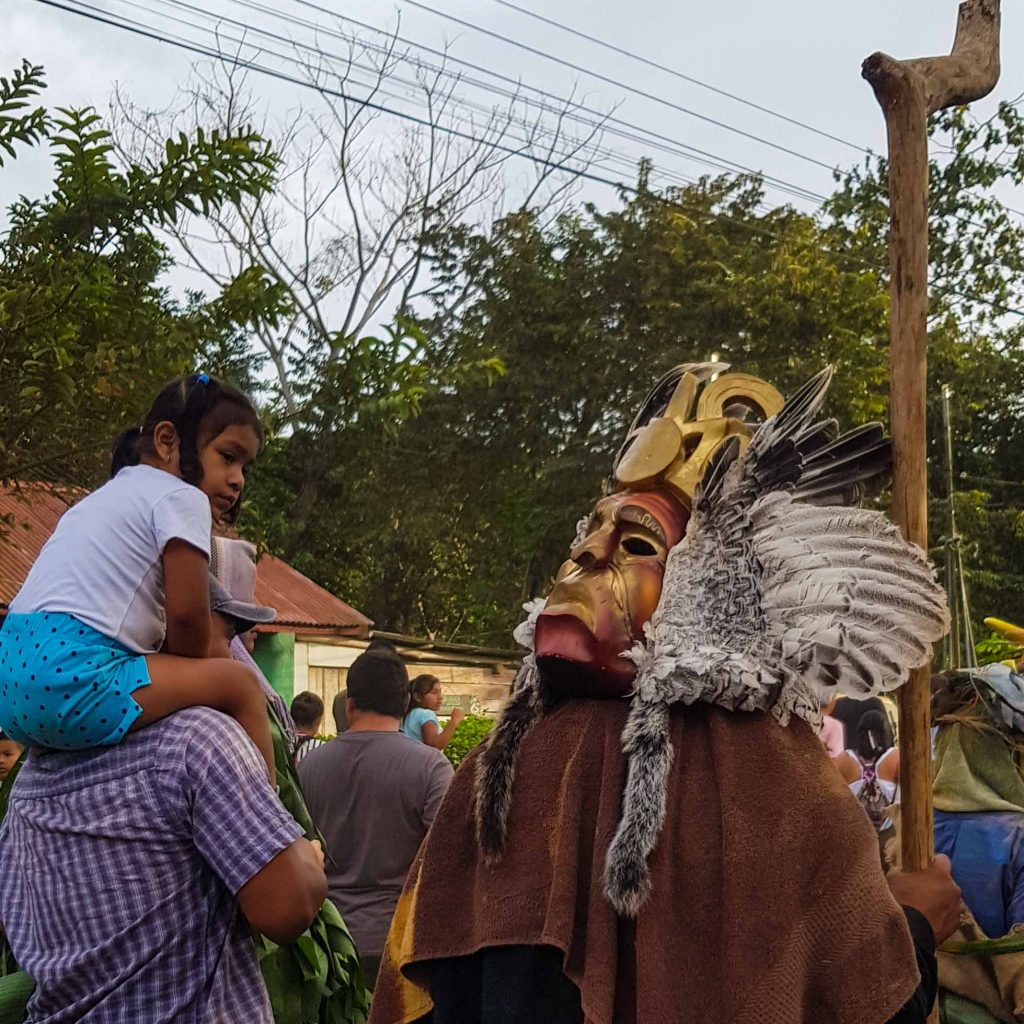
The following information is collected, from the local museum, Mileni Gonzalez, our hostess and the Lonely Planet.
The Borucan people have a rich cultural heritage and their own language. For a couple of years now, their main economy has been art. They sell the masks and hand wooven fabrics and bags, all made from natrual materials, like tree bork. The Agriculture, that used to be their main mean to make a living, is now done by each family indivdually.
A 7 people council is elected, that governs the Reserva Indegena. The leadership for the festivals is passed down from father to son, with the last person being in ‘office’ for 59 years.
My Experience
I visited the Boruca during their main celebration, so I don’t have an impression of day-to-day life. The village has almost no touristic infrastructure, so we stayed with Mileni Gonzales, the touristic coordinator. Being at her place was so nice, the house is beautiful, we got homecooked food, it was backpacker-budget friendly AND she was open to any question.
The other people I’ve met, through sharing Chicha, dancing together or falling on eachother when the fiery bull came to close to the crowd were really welcoming. I’d be really interested in getting to know the culture and practices as well as parts of the language.
If you have the chance to be in Costa Rica around New Year, defintely go, it’s so worth the drive!
